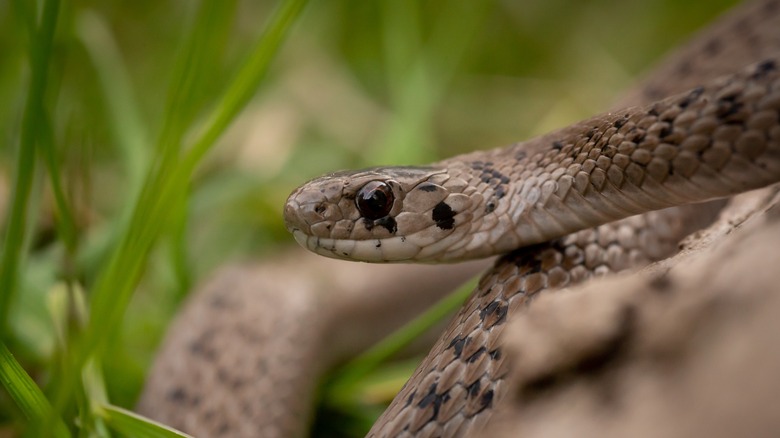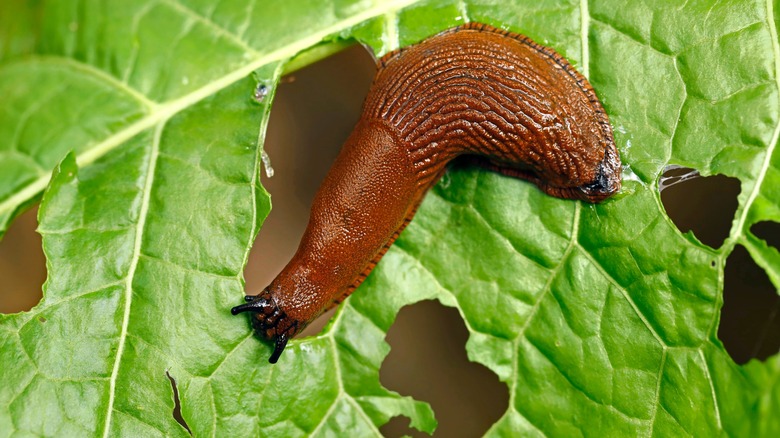Why You Should Welcome These Two Species Of Snakes In Your Garden
To be a good gardener, you sometimes have to make friends with animals that give most people the creepy-crawlies — including snakes. Many common snakes can benefit your garden by eating pests like mice, voles, or bugs that would otherwise be munching on your plants. If you want to eradicate slugs and snails, you should welcome sightings of two species: the Dekay's brownsnake and the red-bellied snake.
While the main risk of having snakes in your yard is getting bitten, these two species are non-venomous, rarely bite, and are so small that a bite wouldn't do much damage even if they did. Still, if you encounter any snake in the garden, don't approach it or try to pick it up. The Humane Society recommends leaving it alone, and it will likely get out of your way. But before you vacate the premises, snap a photo and try to nail down an identification so you can figure out the best next steps. If it's a Dekay's brownsnake or a red-bellied snake, your garden can reap the benefits.
What to know about these helpful snakes
Even though snakes probably have a worse reputation, the slugs and snails that they eat pose more risk to your garden than these common reptiles. Slugs and snails chew on many common garden plants, creating holes, damaging young plants, and reducing your fruit and veggie harvest. While there are many ways to eradicate snails and slugs in your garden, it doesn't hurt to have the help of their natural predators.
Dekay's brownsnakes are common throughout the eastern and southern US, along with part of the central portion. They're brown, with a white or tan underside, a light stripe down their back, black spots on each side, and black marks on their head. They hide during the day and feed at night when slugs and snails are active. A brownsnake's diet is a whopping 75% slugs.
Red-bellied snakes live throughout the eastern, southern, and midwestern US and also specialize in eating slugs and snails. They can even pull snails out of their shells, thanks to their small heads. These snakes are typically brown with a bright red belly, but they may also be gray or black and their bellies may be pink or orange.
The downside is that brownsnakes and red-bellied snakes also eat beneficial earthworms. If you can't get comfortable with them or find them doing more harm than good, you can discourage snakes from living in your garden by cleaning up potential hiding spots (such as leaf piles) and taking pest control into your own hands to eliminate their food supply.

